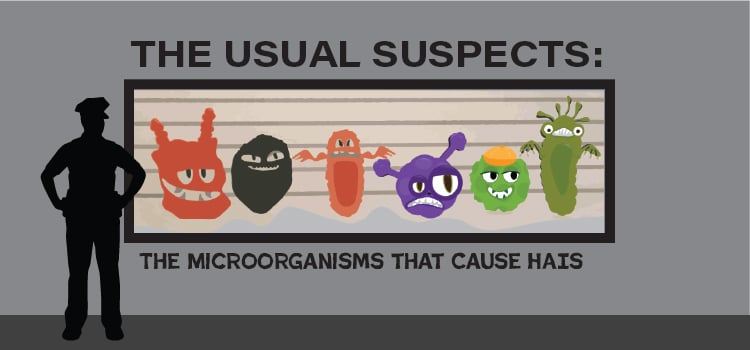What Do HAI Professionals Think about HAI Metrics? A Study Reveals The Answer

 One of the most tracked and reported metrics in today's healthcare facilities is infection rates. Anyone working in a hospital is aware of the importance of keeping these rates as low as possible, as they impact not only patient outcomes, but reimbursement rates and facility reputation as well. It may be an assumption by the general public that these rates are an objective metric with little grey area. However, a recent study investigated what infection prevention experts think about these metrics, and the results may surprise you!
One of the most tracked and reported metrics in today's healthcare facilities is infection rates. Anyone working in a hospital is aware of the importance of keeping these rates as low as possible, as they impact not only patient outcomes, but reimbursement rates and facility reputation as well. It may be an assumption by the general public that these rates are an objective metric with little grey area. However, a recent study investigated what infection prevention experts think about these metrics, and the results may surprise you!
Since infection rates have been tracked by federal and state agencies, and especially after the publication of To Err is Human in 1999, the resulting statistics have been meet with discussion and critique. Over the decades, panels of experts have determined the criteria for diagnosing hospital-associated infections (HAIs), identified the most critical pathogens and infections to track, and set benchmarks for continuous improvement. But what do infection preventionists, those in the field on a daily basis, think about collecting, processing, and reporting of all these data points?
Researchers conducted a web-based survey of infection preventionists and hospital epidemiologists to capture their perceptions of HAI metrics and the impact of metric reporting. Here are the key findings:
HEALTH OUTCOMES
1. IPs believe most HAI rates can be further improved with prevention efforts for all tracked infections. However, the majority of respondents believed that both sepsis and ventilator-associated infections could not be improved through additional interventions.
2. IPs believe some metrics don't accurately measure a "true infection". The great majority of IPs believed that MRSA and surgical site infections (SSI) were very accurately measured as a true infection, with a smaller majority believing the same about central-line infections (CLABSI). The majority of respondents believed the remaining metrics did not accurately identify a true infection: catheter-associated urinary tract infections (CAUTI), C. difficile infections (CDI), ventilator-associated infections (IVAC), and sepsis.
3. IPs are undecided about whether metrics improve patient outcomes. CDI, CLABSI and SSI metrics were thought to have the most positive impact, while IVAC and sepsis had the least.
HOW METRIC IS USED
4. The great majority of IPs do not believe metrics should be used to determine Medicare reimbursement. These results were quite strong, indicating that infection preventionists believe the Centers for Medicare and Medicaid Services (CMS) place too much emphasis is placed on infection rates.
5. The great majority of IPs believe that almost all metrics can be manipulated. IPs strongly believe that most infection metrics are not accurate due to how they are collected and reported (only MRSA was thought to be accurate).
6. The great majority of IPs believe that almost all metrics are misunderstood by the general public. This was the question with the greatest uniformity in responses. Further investigation on this question is merited, both to measure understanding of the general public as well as to determine how IPs arrive at this conclusion in order to address their concerns.
In addition to these key questions, data was collected on what the infection prevention professionals thought about how collecting and reporting impacted their ability to perform their duties. The study revealed that most IPs believed this activity distracted from patient care, but recognized that this attention provided needed resources and support.
Why do studies like this matter? They matter for two important reasons. First, they provided needed insight into the metrics themselves. Those at the front lines, implementing the protocols and interventions with real patients, have perspectives and experiences that should inform how that data is collected and interpreted. Second, the perception of the metrics helps hospitals and regulatory agencies identify areas where more communication, explanation, and training is needed. If IPs believe metrics can be manipulated, perhaps more oversight needs to be provided to ensure this is not the case, or more transparency is needed to alleviate concerns that the metrics are not accurate. We cannot achieve our goal of zero harm without listening to the people who work every day to get us to that goal, and taking their perceptions to heart.
What do you think about these results? Do they match what you see in your facility? We would love to hear thoughts from IPs, nurses, physicians, and other medical practitioners! Share your thoughts in the comments below!
![EOScu Logo - Dark - Outlined [07182023]-01](https://blog.eoscu.com/hubfs/Eoscu_June2024/Images/EOScu%20Logo%20-%20Dark%20-%20Outlined%20%5B07182023%5D-01.svg)




